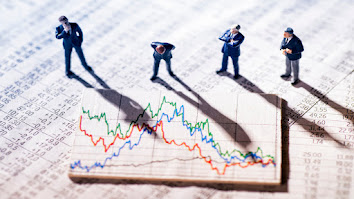What is the Blue Gas TESLA Killer Stock and Why Bother?
What's all the fuss about 'Blue Gas?' Why is it so
important to people? What are the roles of blue gas manufacturers?
Before
we get into the theories about blue gas being the Tesla killer stock,
let's first understand what blue gas is?
What is blue gas?
Blue gas, otherwise called blue gas or blue hydrogen, is nothing
exceptional but a hydrocarbon fuel, mass-produced from hydrogen, natural gas
(methane) & carbon feedstocks. It is similar to unrefined petroleum used in
electric cars powered by hydrogen fuel cells having no hazardous pollutants
other than water vapor. Holistically, the whole process of producing blue
hydrogen is blue gas technology.
The
Tesla Killer Stock has been made available to the general public. A highly
volatile stock debuted in China and quickly rose to the top of the global
market after being listed on the NSE. The price of the blue gas stock has
increased by about 6,000% in the previous month, causing a major stock market
bubble. It plummeted to an all-time low, and the blue gas stock has
now lost an average of 12% over the last three months. As a result, the Tesla
stock is prone to rapid swings due to market movements.
What company makes blue gas stocks?
Among
other market participants, Linde is one of the largest hydrogen gas and
oxygen-based fuel providers. We should keep an eye out for it since it might
become useful if fuel cell adoption picks up or if Space X flies those missions
in the numbers they've promised. Almost all fuel cells are purchased from
private businesses and are rather pricey. There are currently just a few blue
gas stocks available, and we haven't located any blue gas
manufacturers who have worked with SpaceX. These underlying blue
gas stocks have fueled Tesla shares, and their prices have risen in less than a
month in the past. The stock market has been disrupted by Tesla's blue
gas cars and automobiles.
Tesla
stock was performing well five years ago, and this was the point at which the
stock burst into a gigantic bubble. As a result, people's expectations for blue
gas stocks were at an all-time high. The bubble based on blue gas
companies and their stocks grew large enough to explode soon as
frantic investors rushed to buy more and more of these stocks.
Some
other Blue Gas companies also include Kentucky Blue Gas Co.
& BFE.
Rise of Tesla killer stock
In
the United States, the Tesla stock price fell short of market expectations
proving Tesla's loss of power in the most consistent market. This was Tesla's
primary customer base. As a result, the Tesla Killer stock was born.
Consequently, Tesla equities and the underlying blue gas companies plunged
to all-time low valuations, causing the formed blue gas bubbles to implode.
Is it fair to call blue gas a Tesla stock killer?
Imagine
embarking on a road trip with your Tesla and discovering that your car's
battery is running low. Before you can go back on the road, you'll have to
charge the automobile for many hours. When it comes to battery-powered vehicles,
you must be proactive in vehicle maintenance.
Automobiles
that run on blue gas are not only easier to refill, but they also last longer
than cars that run on batteries. This is one of the most challenging discussion
areas to quantify since there are so many factors to consider, such as the
speed and temperature of the air conditioning system that may affect the
outcome.
But
blue gas isn't completely risk-free either, although it's a lot safer to work
with. While the gas is flammable, it is still a very light substance. In other
words, even if you come across a gas leak, it will not concentrate on the
ground and, owing to its low weight, it should evaporate soon. So, albeit there
is a risk of an accident, the gas's qualities reduce the chances of its
occurrence.
Drawbacks of the blue gas
Blue
gas appears to be a dream come true, but it is not without its downsides.
Though blue gas has swiftly established itself as a Tesla contender, with many
major companies investing in it, it should be noted that it is still in its
infancy.
In
other words, as corporations move forward with this gas, there is still a lot
to learn. This is one of the main reasons people are still wary about a gas
that appears to have checked all of the boxes so far. Furthermore, while
assessing the benefits and drawbacks of blue gas, the issue of accessibility
must be taken into account. This issue affects both Tesla and blue gas;
however, it has a greater impact on blue gas.
Indeed,
hydrogen filling stations aren't as common as regular petrol stations. Car
firms will be less motivated to create automobiles that utilize blue gas until
this problem is overcome, as demand will stoop low. However, it's reasonable to
state that this issue isn't insurmountable.
Blue
gas has acquired the moniker "Tesla Killer" with justification. It
appears to be a better and cleaner alternative to Tesla vehicles since it is
more efficient and environmentally friendly.
What are the best blue gas stocks to invest in?
While
many people instinctively associate that future with electric vehicles, many
manufacturers and a group of investment gurus believe a new product, known as
"blue gas," would rise and take the multibillion-dollar market.
Although
the benefits of fuel-cell cars and the ease of converting from diesel engines
have already won some contracts, Tesla is keen to break into this industry. A
zero-emission fuel-cell train is being built on the rail front in southern
California, while hydrogen-powered trains are now in use in Germany and will soon
be available in France and the United Kingdom. The Port of Los Angeles struck a
deal for hydrogen fuel-cell-utility vehicles from Toyota Motor Corp, and
Anheuser-Busch InBev began testing semi-tractor trucks from Nikola Motors.
Most
of the investment potential in hydrogen fuel cells is contingent on governments
committing to the concept, and so far, pledges from Asian and European markets
have boosted fuel-cell stocks. FuelCell Energy Inc., Plug Power Inc., and
Ballard Power Systems Inc. are companies that investors should consider. Even
Cummins Inc., the world's largest diesel business, has purchased a fuel-cell
firm.
Blue gas stock prices
The
prices of all power cell companies have increased significantly over a year.
However, stock market investors must be cautious when blue gas stock values
tend to plummet for the new year.
Ballard
stock and the succeeding blue gas stock are trading like a mad cloud with its
quadrupled values over the eight months. The software company's stock is worth
$2 billion, and it has been selling at more than a twentyfold premium over the
mandated sales price. However, it is currently not profitable. The revenues are
predicted to expand at a rate of 35-40 percent every year, with the larger
corporations tracking monthly growth. The accessibility of the stock will be
extensive as they offer fuel stocks based on blue gas or hydrogen gas into
China's buses/trucks business.
While
some investors may be hearing about "blue gas" and hydrogen
fuel-cells for the first time, others will be familiar with a narrative that
has circulated several times in the previous decade. "Blue gas" will
not ascend to the top until some significant pledges and investments speed in
the sector, lowering prices as they did with electric cars. Such markets have
much volatility. As a result, investors should be careful about Tesla's killer
stock plummeting. The price of hydrogen or blue gas stocks will reduce due to
this.



Comments
Post a Comment